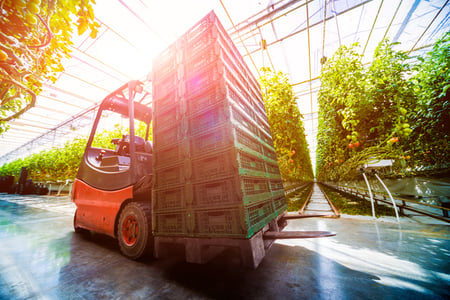 If you’ve stared down an empty aisle of paper towels and disinfectants, you’re aware that the coronavirus pandemic has had a catastrophic effect on big and small businesses alike, with grocery stores particularly struggling to keep up. They’ve not only had to respond to new restrictions and customer needs, they’ve also needed to protect their workers on the front lines.
If you’ve stared down an empty aisle of paper towels and disinfectants, you’re aware that the coronavirus pandemic has had a catastrophic effect on big and small businesses alike, with grocery stores particularly struggling to keep up. They’ve not only had to respond to new restrictions and customer needs, they’ve also needed to protect their workers on the front lines.
Nationally, the ways that chains have responded have been uneven at best, with mixed results: some stores have taken the steps to limit the number of shoppers that are allowed in at one time, but this can create frustration. And stores who have not instituted any limiting measures create a different problem: an atmosphere that could be dangerous for public health, and a free-for-all on desirable goods. (Who hasn’t seen those videos of people loading pallets of toilet paper into their SUVs?)
But while many large chains have struggled with managing customer and employee safety, while still keeping their shelves fully stocked, there’s one company that’s found a way to shine: according to the Austin Eater, the beloved San Antonio-based grocery chain H-E-B has been able to “stay stocked, manage social distancing, and even donate $3 million to help with novel coronavirus aid.”
How did they pull this off? It was all thanks to their year-round, full-time emergency preparedness team.
A Flexible, Responsive Supply Chain
The reason that a regional chain like H-E-B was better prepared for the pandemic than many national chains was because they understood the importance of setting up a flexible, responsive supply chain. Unlike others who were forced to frantically react, H-E-B’s year-round, full-time emergency preparedness team ensured that they were prepared far in advance of this -- or any -- emergency.
Here are the ways that H-E-B used supply chain flexibility to prepare for the pandemic.
1. They responded early and immediately: H-E-B followed the news closely and started running tabletop exercises in early February; they began limiting the amounts of certain products available for customer purchase in early March. In this case, advance preparation paid off in spades.
2. They sought out data from the experts: Starting in January, H-E-B got in touch with suppliers and retailers in China and Italy to find out lessons learned first-hand. They asked:
-
How did the virus affect grocery and retail?
-
How did the virus affect employees?
-
How were people addressing sanitization and social distancing?
-
How did quarantine affect the supply chain?
-
How had shopping behavior changed as the virus progressed?
-
How did companies work to serve communities with total lockdowns in place?
-
What action steps did those businesses wish they had done early in the cycle to get ahead of it?
In other words, they did their research and leveraged learnings from companies that were experiencing the pandemic first-hand.
1. They considered employee needs: Not only did H-E-B give employees a $2 an hour raise, but main warehouse employees were provided with two meals a day and also given the opportunity to shop at an on-site store stocked with essentials. H-E-B also reached out to corporate headquarters to find volunteers for shifts in stores and warehouses. They got 800 volunteers for 400 shifts. Why? H-E-B didn’t try to pretend that employees weren’t doing risky work. Instead, they acknowledged the difficulties and tried to ensure their employees would feel valued.
2. They activated their Emergency Operations Command Center on March 4th. This 1.6m square-foot warehouse brought together leaders from almost every area of H-E-B so they could more effectively collaborate. (Don’t worry--they practiced social distancing!) Under more “normal” emergency conditions, only impacted department heads would work together in the EOCC, but in this case, there was almost no department not affected. This kind of coordination allowed H-E-B to pivot quickly.
3. They listened to customers: “When we started seeing [a run on] the N95 masks and the sanitizers, we took that as a good sign that our customers were concerned about what was going on,” Justen Noakes, director of emergency preparedness at H-E-B explained, “and that’s what really spurred us to activate our program. That’s the biggest one -- to make sure that we’re really paying attention to what our customer does, and to actually respond to it.”
4. Got creative with new local supply chains: when they needed to find a way to get eggs delivered to their stores, H-E-B found an unexpected partner: Texas beer distributors. They also found a new local supply chain by working with Labatt Food Services, a local food distributor.
5. Created new shipment options – H-E-B had recently launched a direct-to-consumer delivery app using micro-fulfillment and last-mile delivery. In early March, the company leveraged that structure to ensure seniors could receive groceries safely. H-E-B partnered with Favor Delivery to offer a low-cost option to bring essential food and supplies to seniors’ doorsteps.
Lessons Learned
H-E-B was able to respond to the pandemic, protect their employees, meet their customers’ needs, and avoid a shutdown better than most national companies for two reasons: preparedness and flexibility.
While most companies have been forced to make changes on the fly, H-E-B’s success story demonstrates the importance of building your supply chain with flexibility in mind. Once your company has time to take a breath, it may be time to consider reworking your supply chain using H-E-B’s success story as a model.



